Let me open up this blog with a notice that I am a self proclaimed traveler together with my husband who has been my travel buddy, photographer, videographer and most of the time, PA. But unlike other travelers who have gone to different countries, I myself would like to get to know my country first. Our goal is to contribute, help in a way the tourism of our beloved nation. That is why, I talk about places and attractions within the Philippines.
Cebu City's my starting point because of course, I am currently based here although I am a pure Boholana. Don't worry, I will be sharing my own Bohol travels too in the future. For now, join me in wandering within this city referred as the Queen City of the South.
The perfect start is within the city, this is where most tourists' starting point and I will show you how you can enjoy a full day touring within the city in your own way, your own pace and within your own budget.
The city offers multiple of options in terms of learning its history. Note that Cebu is the oldest city of the country so there are definitely a lot of places to discover the ancient Cebu. My own do-it-yourself itinerary would tell you to visit Casa Gorordo and its neighboring historic structures.
Learn Cebu's History at CASA GORORDO MUSEUM

"Where history meets technology"
It is a perfect start for your getting to know Cebu's history. The Balay na Tisa or house with a tiled roof was built in the 1850s, bought by a Spanish merchant in the name of Juan Isidro de Gorordo in 1863 and stayed there until its fourth generation including the first Filipino bishop of Cebu in the name of Juan Gorordo.
Ramon Aboititz Foundation however bought it and opened it to the public in 1983. It was recently renovated and a touch of technology had been added into it which made it into one interesting place to check out.
THE "SILONG"
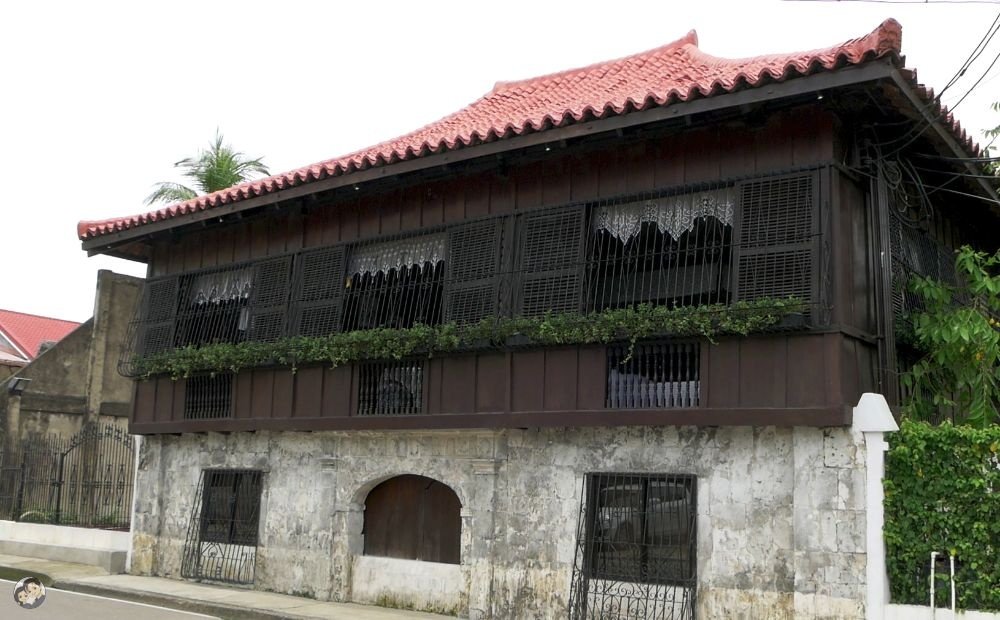

The Balay na Tisa has been designed according to the traditional Bahay Kubo of the Filipinos where the lower ground is built to accommodate domesticated animals and a parking area for a Filipino family's vehicles. It also acts as a storage area and even has a portion for visitors to stay while the house owners are still being called to ask permission if these guests can come upstairs, this is referred as Descanso, a Spanish term for waiting area.

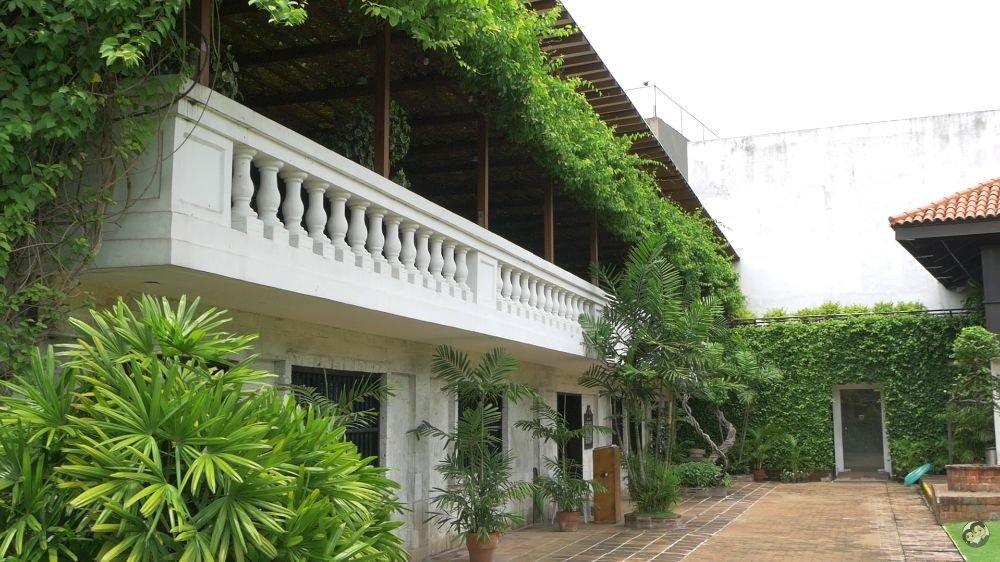
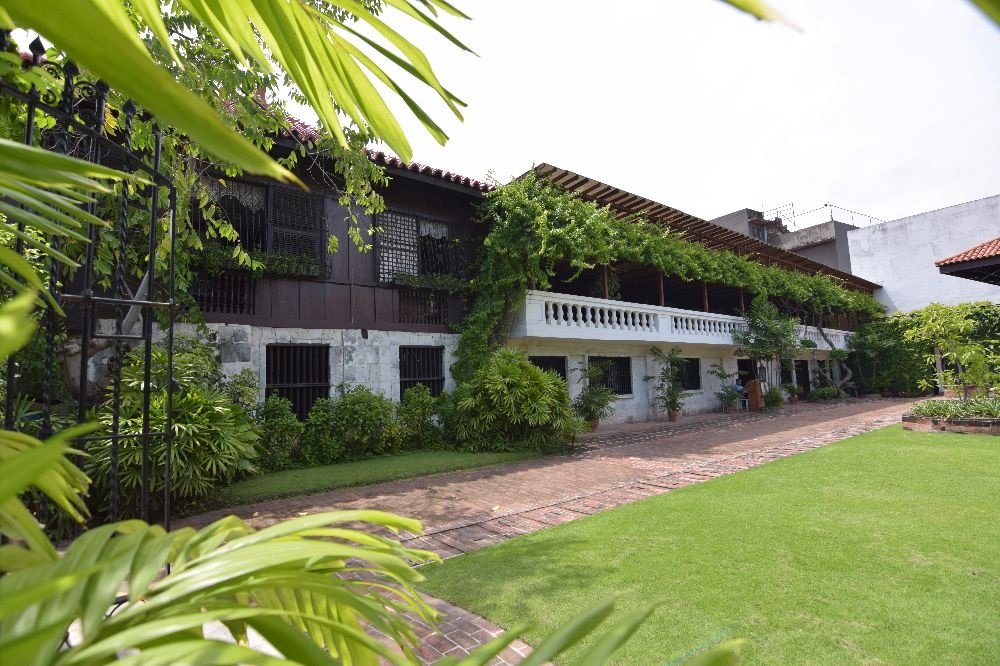
THE "TAAS"
The second floor has more interesting partitions which depicts the tradition and the Filipino culture. The long staircase signifies a family's status in the society. Casa Gorordo has a wide on which means they do place a high status in their community, specifically in Parian.
SALA
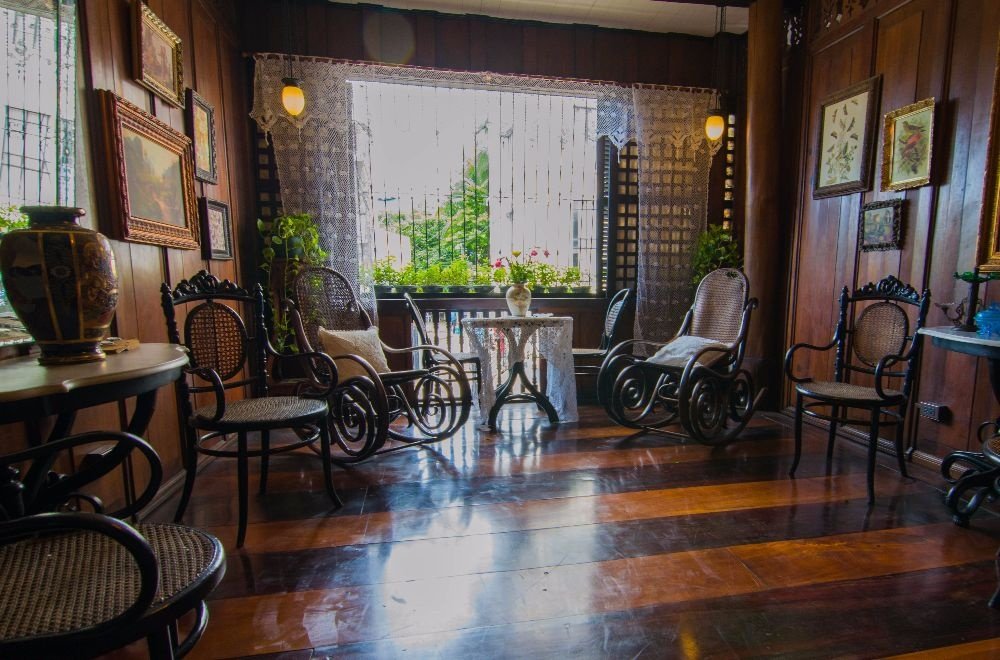
I so love the wooden floors!
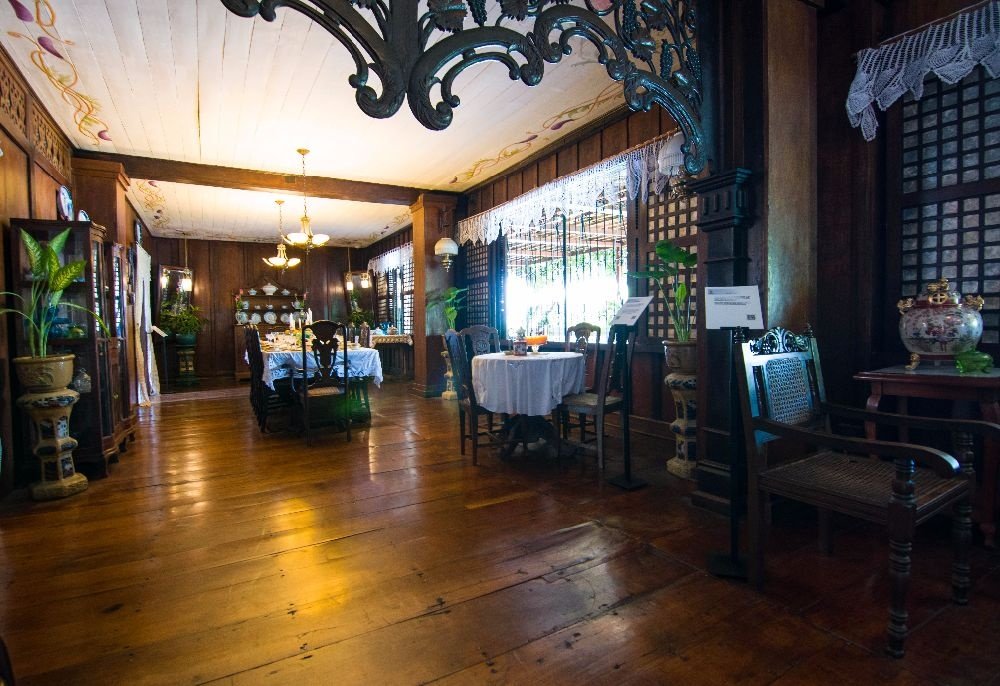
A suitor's section is also available. A suitor will have to showcase his talents to all the family members if he'd like to win the heart of the woman he's courting with. He can sing with guitars or deliver a poem.
Formal Sala is is a spacious area with items depicting the family. Photos framed and hang on the walls, paintings of different landscapes and even flowers made by historic artists and a huge Venetian mirror which guests can use to check how they look. What's so lovely here is the chairs made out of rattan and wood materials. There's a huge window too designed to give proper ventilation and lighting during the day, not to mention its shiny wooden floors maintained and cleaned in a daily basis.
ROOMS

This is the master's bedroom.
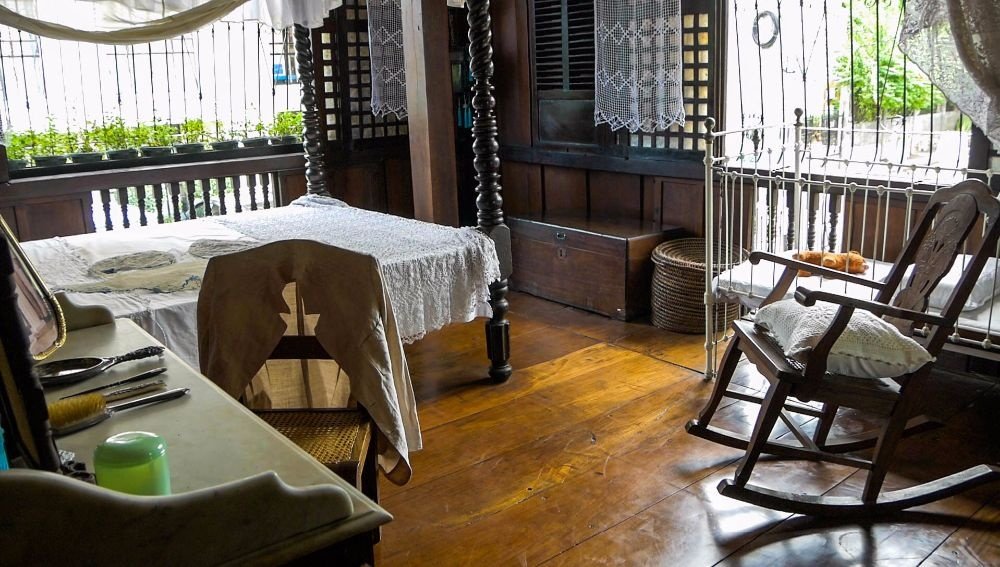
This is the couple's room and a baby's crib is also placed here for their baby.
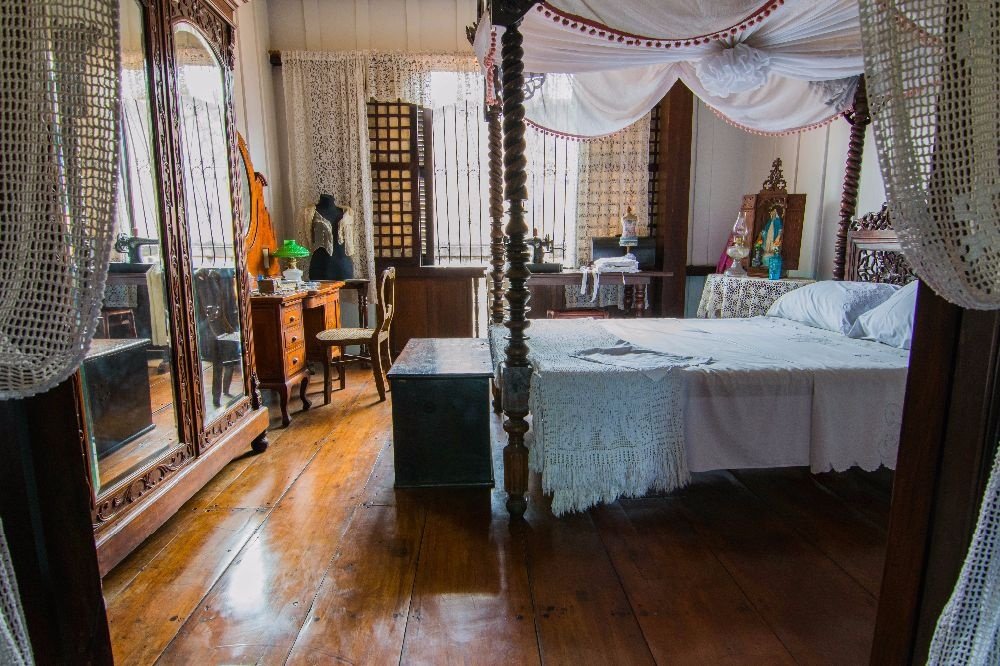
The maiden's room, any lady who has not yet married sleeps here.
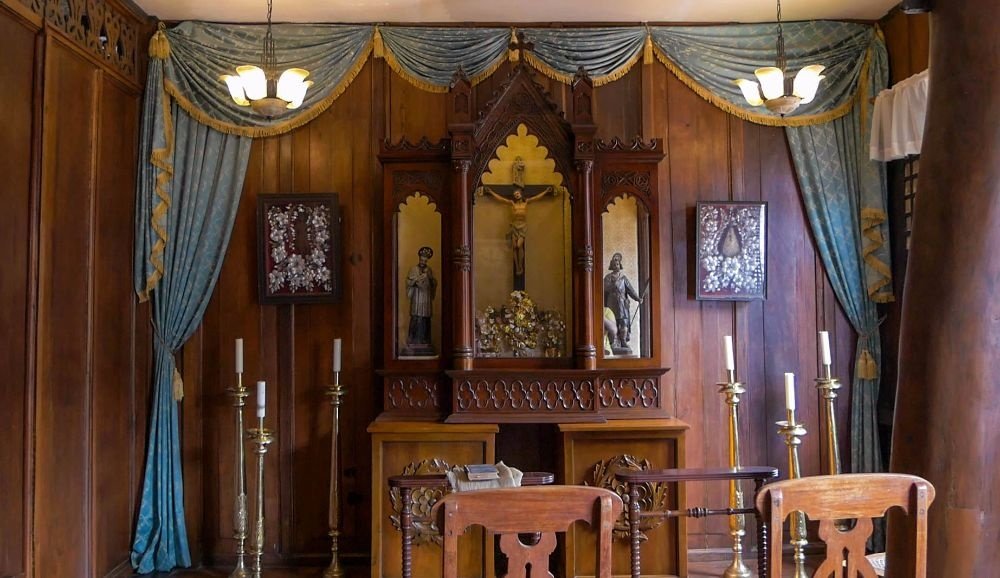
The children's room turned into a chapel where the bishop conducts private family masses.
There were four major rooms in the house. One for the master, for the couples, a maiden room and a children's room turned into a family chapel. There's so much culture and tradition living within these rooms. For instance, the couple's room is only used for those newly married couples and where they spend their honeymoon while the rest of the family members listen from the outside. It was an old tradition that after the couple had their first love making, the family members would then check the bed sheets and would look for blood stains. If there are blood stains, it signifies the virginity of the wife while if they couldn't find blood stains, it only means two things: either the wife is not anymore a virgin or nothing happened the entire time. This however is not anymore observed in the modern Cebu.
DINING AREA
Its kitchen and dining area are located right next to each other. The table can accommodate ten to a dozen people while there's a separate table for the children. It was a usual thing before for children disallowed to interfere with the adults' businesses.
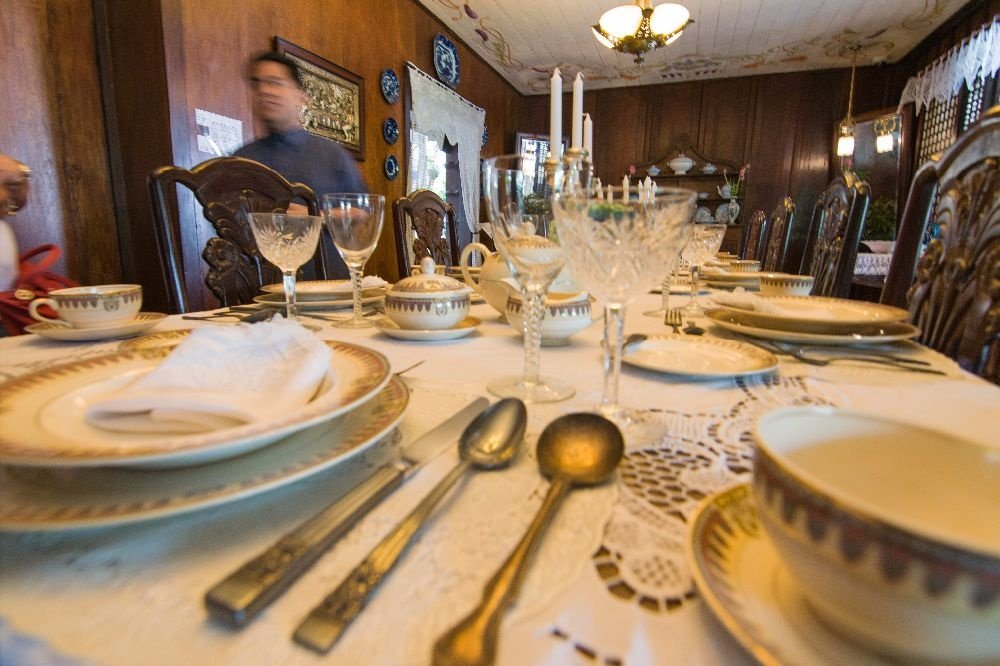
The dining table.
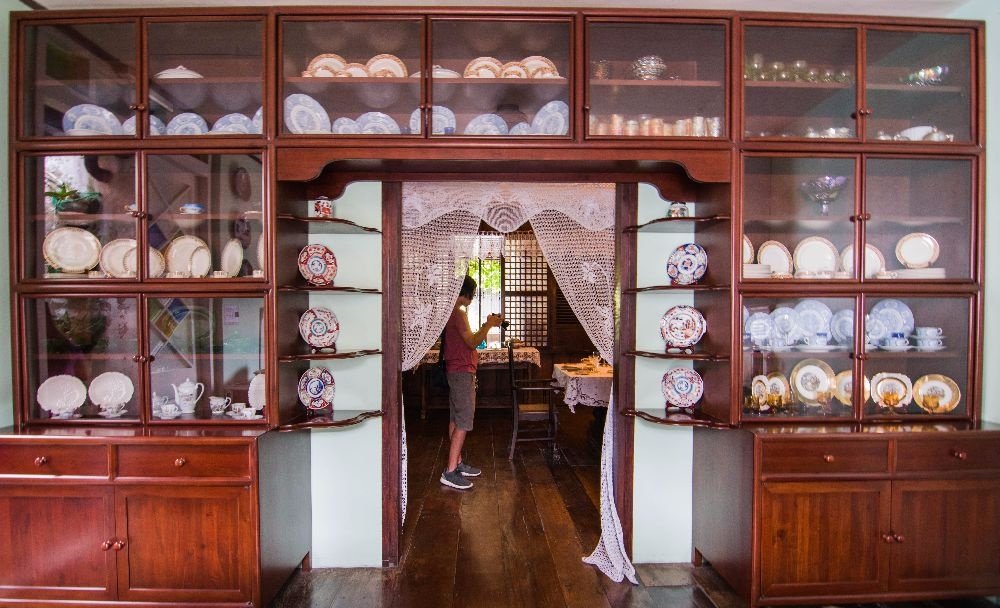
The Gorordo Family's collection.
Currently, antique items and collections are visible within the kitchen area. There are also other different tables such as the play table where the family usually play cards and sungka. There's a gift table for presents and a table for their music instruments.
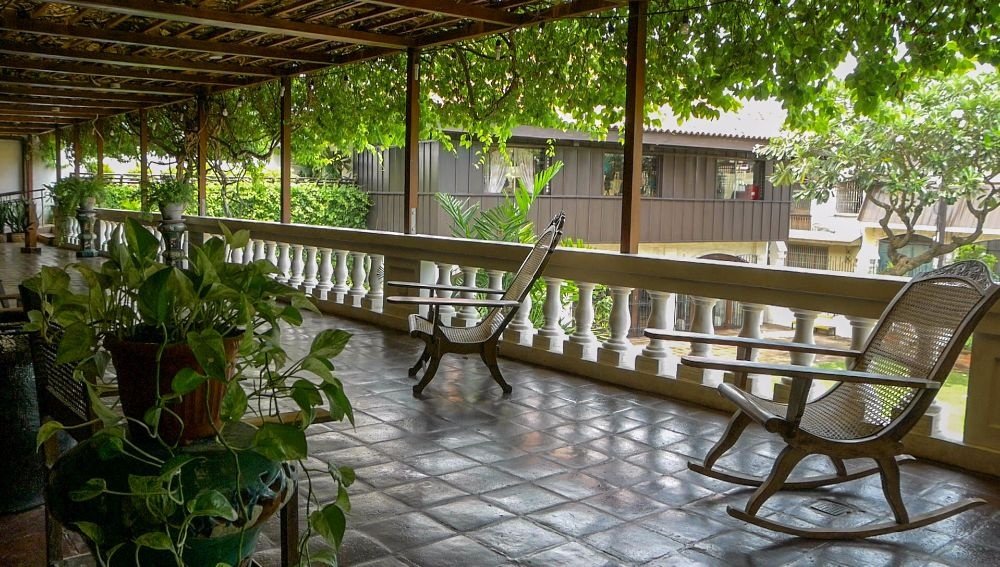
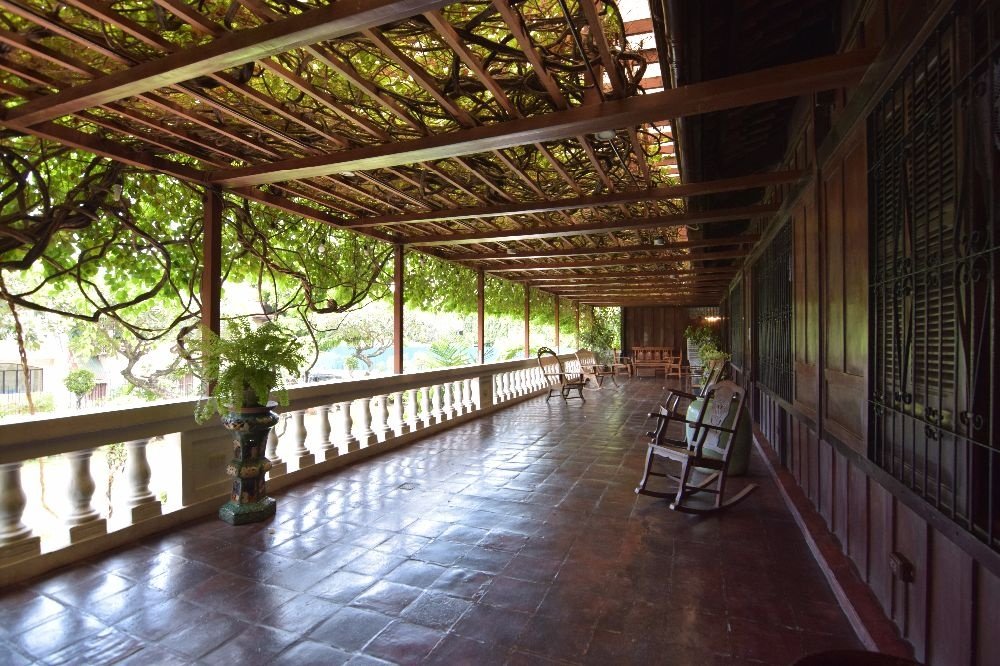
VERANDA
Another interesting spot is the veranda. It's a huge area made for the family's recreational activities such as playing games, siesta, rope making, special conversations and a spot for where they could watch over their house helpers.

Spacious and very airy. There's a crawling plant on its roof to give cool air.

Perfect spot for an afternoon siesta.
During the tour, an interactive big screen is available to show guests and visitors how the old Cebu looked like and a film showing is also including during the tour to show the complication and the uniqueness of being a Filipino. And headphones can be used to listen to how the early Cebu locals speak and talk. There are also areas where they provide a list of the prominent names of the city. This includes the current president's family name both from his father, Duterte and his mother, Roa.
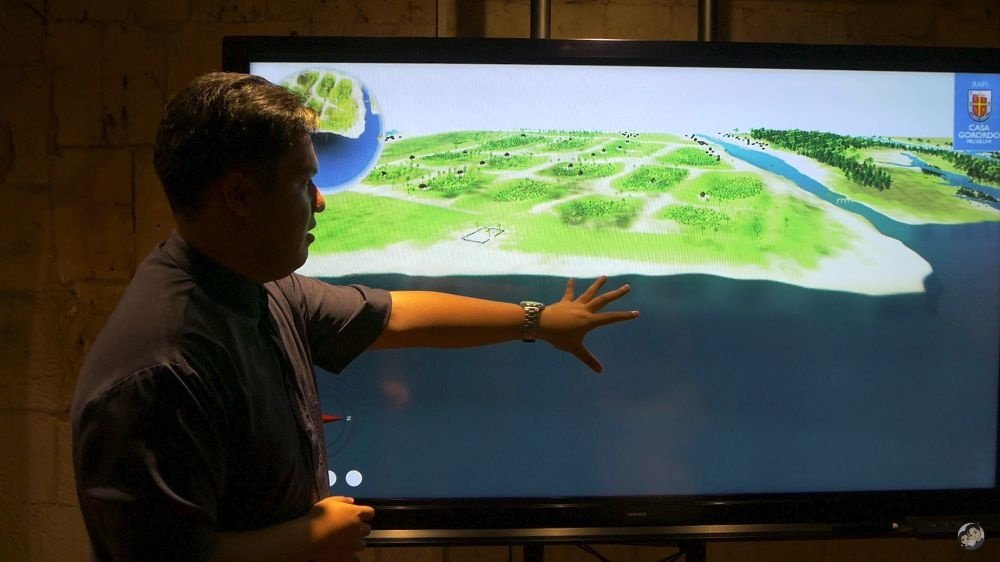
Tour guide was very well versed, he can entertain questions and is very knowledgeable. Here he talks about the old Cebu.
How to get there?
From downtown Cebu City, one can hire a cab or book a GrabCar or Uber to take you to Casa Gorordo. There are other means as well like Angkas for motorcycle ride which can take you to the area faster.
Tour Fees:
Php 180 - includes the use of tablet, earphones, souvenir, booklet and beverage
Php 150 - includes free use of earphones, a souvenir, booklet and a beverage
Php 120 - includes earphones, souvenir and a booklet
Php 80 - inlcues use of earphones, a booklet and activity sheets for guests of 12 years old and below
Casa Gorordo Museum is open Tuesday to Sunday between 9AM to 5PM. They accept reservations but one can still walk in. The tour usually takes an hour or two, you can buy souvenir items from their shop too.
This is just the start of the Cebu City Tour! Upvote if you like this entry, follow me for more travel blogs and give me some love by dropping some comments! I will definitely appreciate it!
!steemitworldmap 10.299883 lat 123.904961 long d3scr
xo JUNEBRIDE xo
